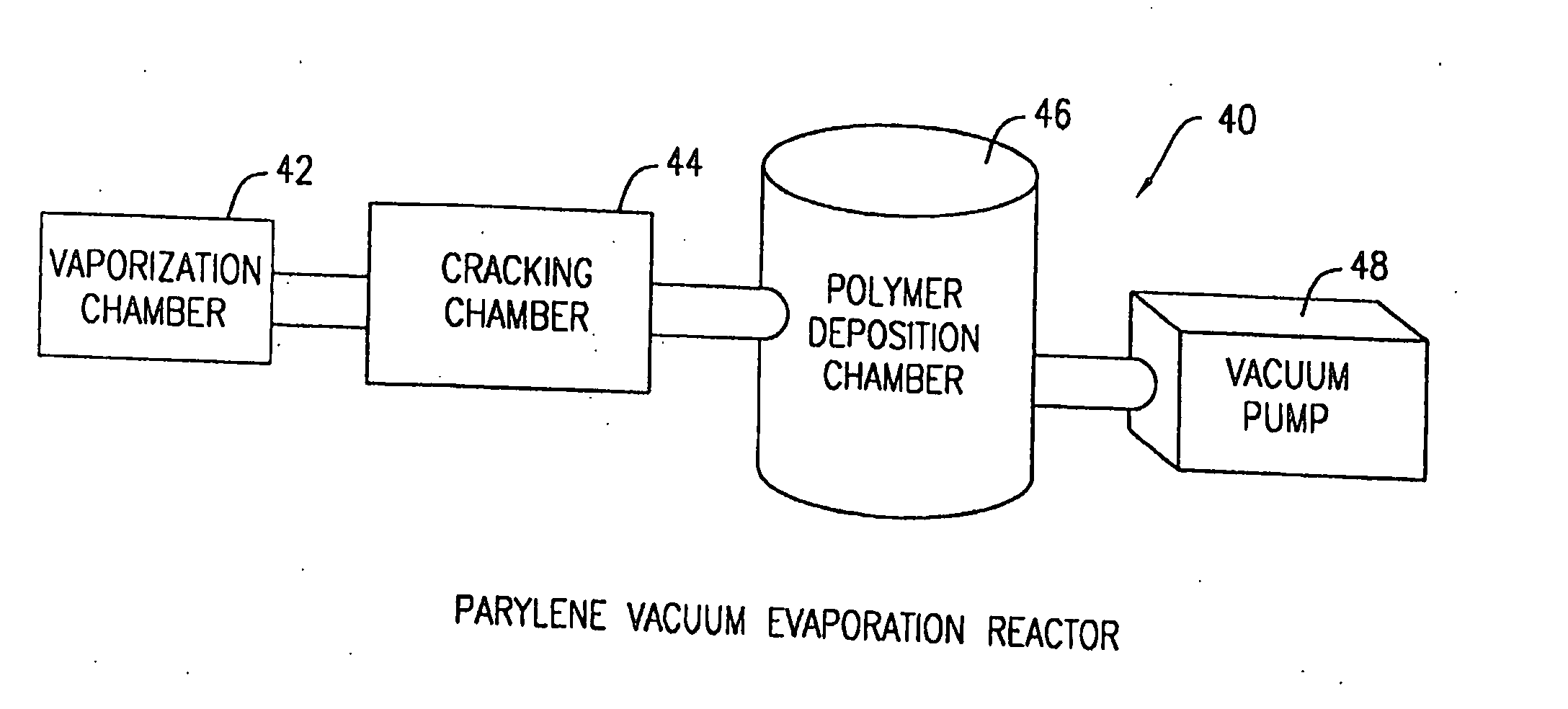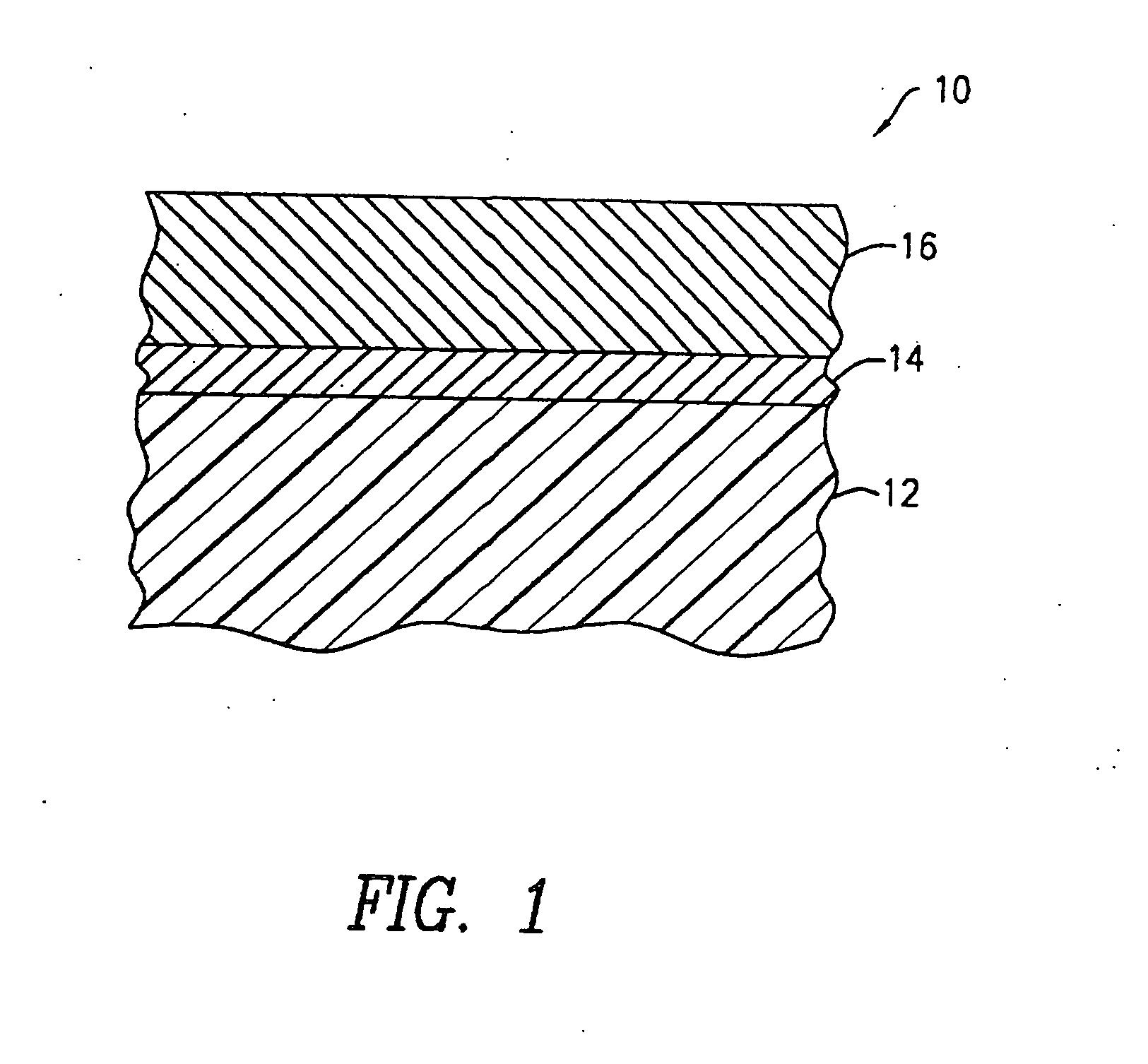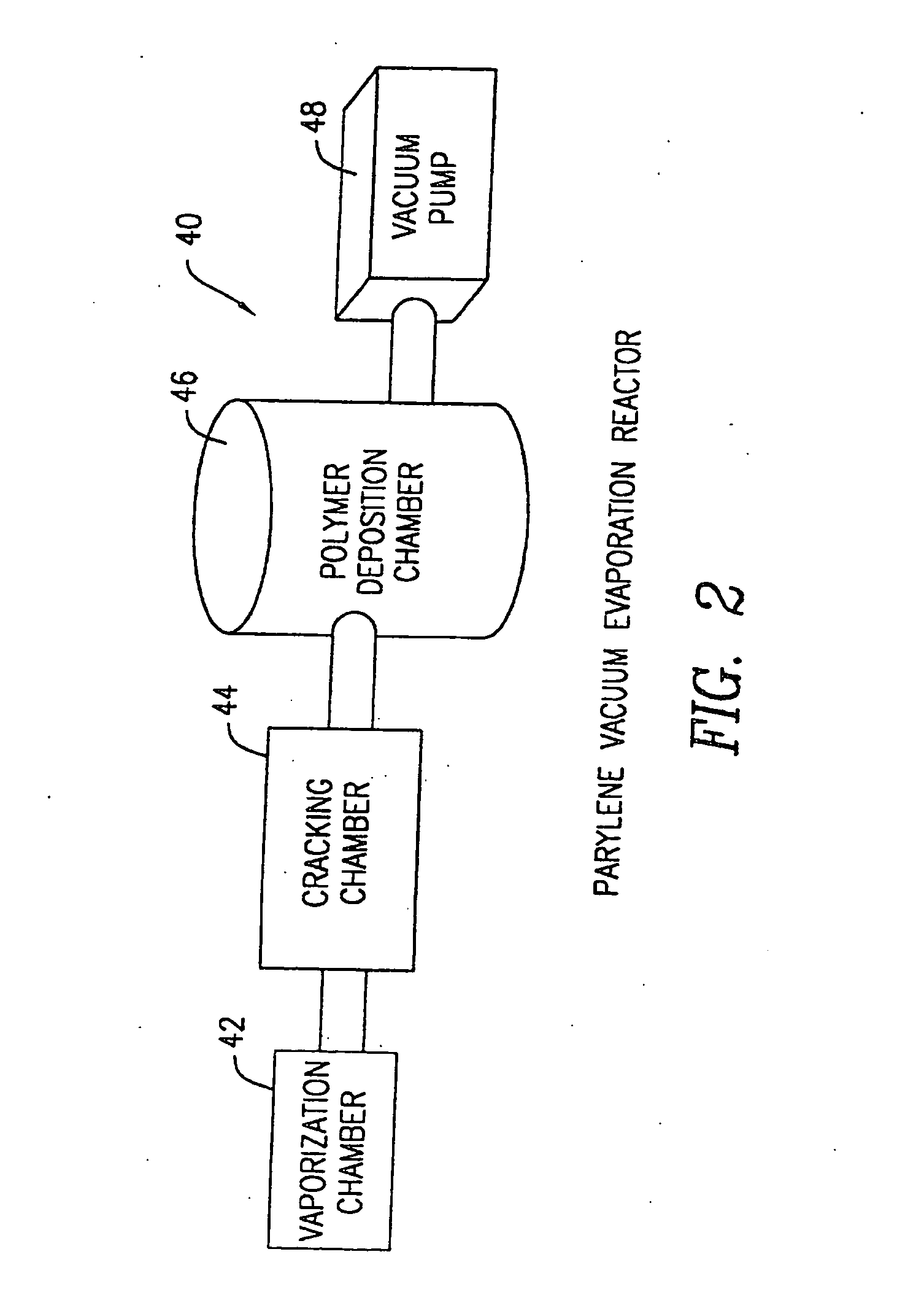Barrier coating composition for a substrate
a technology of barrier coating and substrate, applied in the field of optical construction, can solve problems such as loss of reflectivity, and achieve the effects of efficient channeling, high optical performance, and favorable durability
- Summary
- Abstract
- Description
- Claims
- Application Information
AI Technical Summary
Benefits of technology
Problems solved by technology
Method used
Image
Examples
example 1
Experimental Tests
We obtained samples of optical quality polymethyl methylacrylate (PMMA) substrates with a reflective index of 1.49 for testing. An aluminum oxide coating was evaporatively applied to one set of samples using conventional electron beam evaporation deposition process to form an adhesion-promoting layer. The aluminum oxide source having a purity of 99.999%, was obtained from Cerac of Milwaukee, Wis. The aluminum oxide was deposited using a flow of 21.8% O2 / Ar at a total pressure of 2×10−4 Torr. The deposition rate was set at approximately 1 Å per second to produce a final thickness of about 300 Å.
A layer of silver metal was applied to the surface of each sample substrate using a conventional electron beam evaporation deposition process. The silver metal source having a purity of 99.999%, was obtained from Cerac. The silver layer was applied at a thickness of 1,000 Å at a deposition rate of from about 1.2 to 7.3 Å per second. The average deposition rate was about 3...
PUM
| Property | Measurement | Unit |
|---|---|---|
| reflectance | aaaaa | aaaaa |
| reflectance | aaaaa | aaaaa |
| reflectance | aaaaa | aaaaa |
Abstract
Description
Claims
Application Information
 Login to View More
Login to View More - R&D
- Intellectual Property
- Life Sciences
- Materials
- Tech Scout
- Unparalleled Data Quality
- Higher Quality Content
- 60% Fewer Hallucinations
Browse by: Latest US Patents, China's latest patents, Technical Efficacy Thesaurus, Application Domain, Technology Topic, Popular Technical Reports.
© 2025 PatSnap. All rights reserved.Legal|Privacy policy|Modern Slavery Act Transparency Statement|Sitemap|About US| Contact US: help@patsnap.com



